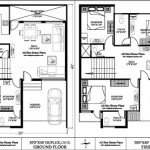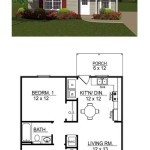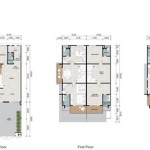Plans For Building An Insulated Dog House
Providing a comfortable and safe shelter for a dog is a responsible pet owner's duty. This extends beyond simply providing a roof; it encompasses ensuring the dog's living space is adequately insulated against temperature extremes. An insulated dog house offers protection from the harsh cold of winter and the intense heat of summer, creating a more consistent and comfortable environment. Constructing an insulated dog house involves careful planning, material selection, and proper execution of the building process.
Before embarking on the construction process, it is crucial to develop a detailed plan. This plan should incorporate the dog's size and breed, the climate in which the dog house will be located, and the available resources for construction. Understanding these factors will inform decisions on the size of the dog house, the type of insulation to use, and the overall design. A well-thought-out plan will streamline the building process and contribute to a more effective and durable dog house.
Determining the Appropriate Size and Shape
The dimensions of the dog house should be proportional to the dog's size. The dog should be able to stand up, turn around, and lie down comfortably inside. A dog house that is too large will not retain heat effectively in colder climates, while a dog house that is too small will be uncomfortable and potentially stressful for the dog. Measurements should be taken of the dog's height, length, and width to determine the optimal interior dimensions. Add a few inches to each measurement to allow for comfortable movement.
The shape of the dog house can impact its insulation efficiency. A simple rectangular or square shape is generally the easiest to build and provides adequate space for the dog. Dome-shaped dog houses can also be effective at retaining heat, but they may be more challenging to construct. Consider the aesthetic appeal of the dog house and how it will fit into the surrounding environment, but prioritize functionality and insulation performance.
The entrance size is another critical consideration. It should be large enough for the dog to enter and exit easily but small enough to minimize heat loss. A flap door made of heavy canvas or rubber can be added to further reduce drafts and retain heat. The placement of the entrance should also be considered, ideally facing away from prevailing winds.
Selecting Appropriate Insulation Materials
The choice of insulation materials is paramount to the effectiveness of the insulated dog house. Several options are available, each with its own advantages and disadvantages. Consider factors such as R-value (a measure of thermal resistance), cost, ease of installation, and resistance to moisture and pests when making this decision.
Fiberglass insulation is a common and relatively inexpensive option. It offers good thermal resistance but can be irritating to the skin and respiratory system during installation. It's crucial to wear protective gear such as gloves, a mask, and eye protection when working with fiberglass. It’s important to ensure the fiberglass is completely sealed within the walls to prevent the dog from coming into contact with it and potentially ingesting or inhaling it.
Foam board insulation, such as rigid polystyrene or polyurethane, offers excellent thermal resistance and is relatively easy to install. It is also more resistant to moisture and pests than fiberglass. Foam board can be cut to size with a utility knife and glued or screwed to the interior walls of the dog house. Ensure all seams are sealed with tape to prevent air leaks.
Reflective insulation, such as bubble wrap or foil-faced insulation, works by reflecting radiant heat. It is most effective when used in conjunction with other types of insulation. Reflective insulation can be installed on the interior walls of the dog house to help reflect heat back towards the dog in the winter and away from the dog in the summer.
Natural insulation materials, such as straw or recycled denim, are eco-friendly options. Straw provides good insulation and is relatively inexpensive, but it is susceptible to moisture and pests. Recycled denim is a sustainable option that offers good thermal and acoustic insulation. It is also treated to be resistant to mold and pests.
Constructing the Insulated Dog House
The construction process begins with building the frame of the dog house. This can be made from wood, such as pressure-treated lumber, which is resistant to rot and insect damage. Cut the wood according to the dimensions specified in the plan. Assemble the frame using nails, screws, or bolts. Ensure the frame is sturdy and square.
Once the frame is constructed, attach the exterior siding. This can be made from wood, plywood, or composite materials. Choose a material that is durable, weather-resistant, and aesthetically pleasing. Cut the siding to size and attach it to the frame using nails or screws. Ensure the siding is properly aligned and sealed to prevent water from entering the dog house.
Next, install the insulation. Cut the insulation material to size and fit it snugly between the studs of the frame. Secure the insulation with adhesive or staples. Ensure there are no gaps or voids in the insulation. Seal all seams and edges with tape to prevent air leaks.
After the insulation is installed, attach the interior lining. This can be made from plywood, drywall, or other suitable material. Choose a material that is smooth, easy to clean, and non-toxic. Cut the lining to size and attach it to the frame using nails or screws. Ensure the lining is properly aligned and sealed to prevent the dog from coming into contact with the insulation.
Construct the roof of the dog house. The roof should be sloped to allow water to drain away. Cover the roof with roofing materials such as asphalt shingles, metal roofing, or rubber roofing. Ensure the roof is properly sealed to prevent leaks.
Add finishing touches such as trim, paint, and a door flap. Trim can be added to the edges of the dog house to conceal the seams and provide a more finished look. Paint the dog house with a non-toxic exterior paint to protect it from the elements. Install a door flap to help retain heat and keep out drafts.
Elevating the dog house off the ground can further improve its insulation. This prevents the dog house from directly contacting the cold ground, reducing heat loss. A simple platform can be built from wood or concrete blocks. Ensure the platform is stable and level.
Ventilation is also important, even in an insulated dog house. A small vent near the roof can help to prevent condensation and ensure proper air circulation. The vent should be screened to keep out insects. The size of the vent should be appropriate for the size of the dog house and the climate. In warmer climates, larger vents may be necessary to provide adequate ventilation.
Regular maintenance is essential to ensure the longevity and effectiveness of the insulated dog house. Inspect the dog house regularly for damage, such as cracks, leaks, or rot. Repair any damage promptly. Clean the dog house regularly to prevent the buildup of dirt and debris. Replace the bedding regularly to keep the dog comfortable and healthy.
Selecting appropriate bedding can also enhance the insulation of the dog house. Straw, cedar shavings, or a thick blanket can provide additional insulation and comfort for the dog. Avoid using towels or thin blankets, as they do not provide adequate insulation. The bedding should be changed regularly to prevent the growth of mold and bacteria.
By carefully planning and executing the construction process, pet owners can build an insulated dog house that provides a comfortable and safe shelter for their canine companions. This contributes significantly to the dog's overall well-being and health, especially in regions with extreme weather conditions. Prioritizing the dog's comfort and safety by constructing a properly insulated dog house demonstrates responsible pet ownership.
Cold Weather Dog House Plans Bradshomefurnishings Winter Insulated Diy
Insulated Dog House Diy Plans
Insulated Dog House Plans Myoutdoorplans
How To Build A Custom Insulated Dog House Ron Hazelton
How To Build An Insulated Or Heated Doghouse Easy Diy
14 Diy Dog Houses How To Build A House Plans Blueprints
How To Build An Insulated Or Heated Doghouse Easy Diy
Best 25 Insulated Dog Houses Ideas Only On Maison Pour Chien Plans De Niche Abris Animaux
Easy Diy Winter Doghouse Self Sufficient Projects
Insulated Dog House Plans Wilker Do S








